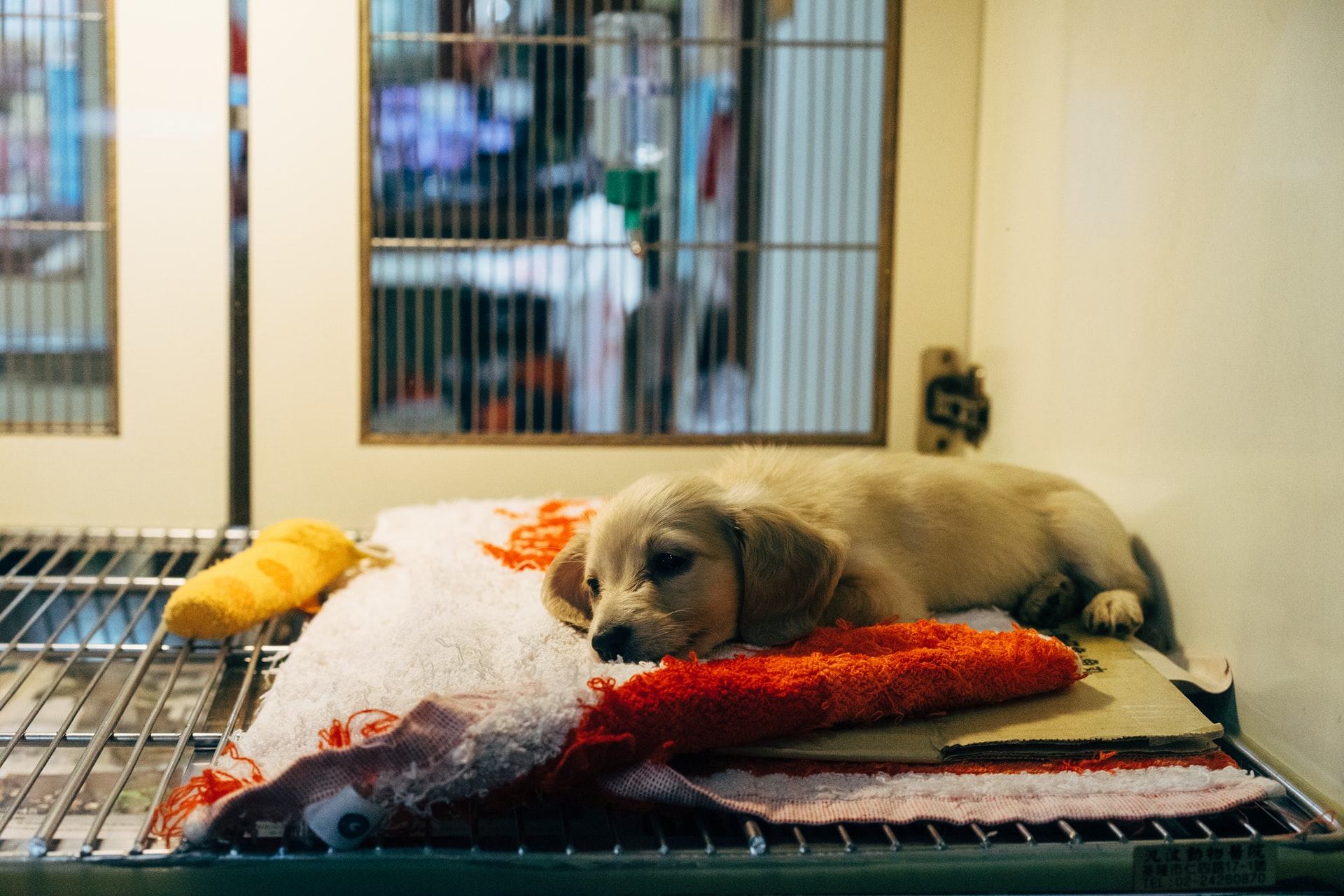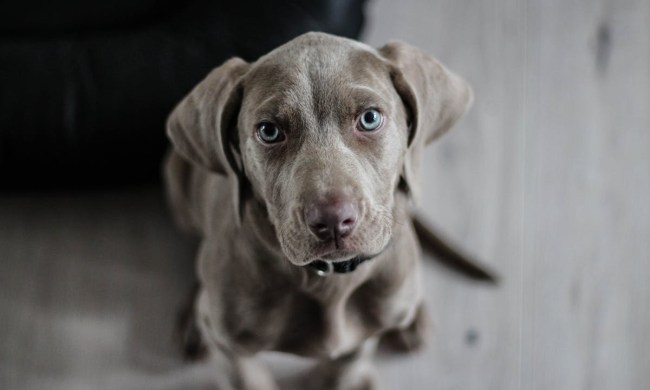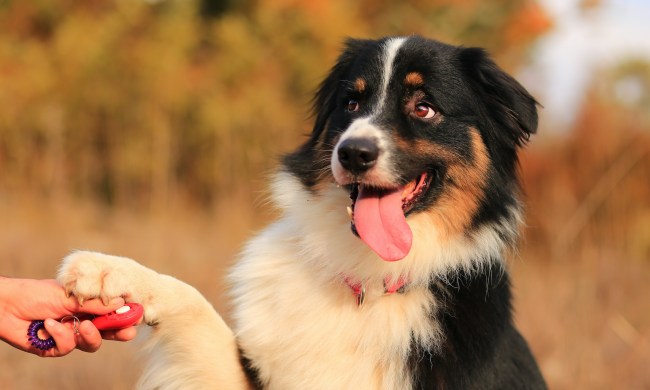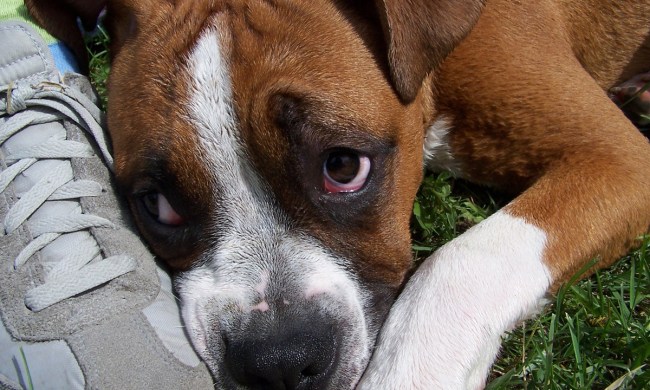As much as you’d like to, you just can’t take your dog everywhere. On those occasions when your furry companion has to remain home, knowing he is safe and secure in a kennel can give you great peace of mind. Here’s how to kennel train your dog in a positive, responsible way.
Which kennel is right for your dog
Before you begin training, you’ll need to choose a crate. There are several different options to choose from.
Plastic portable dog carriers
If you have a small- to medium-sized dog that you’ll be transporting frequently, this might be the right choice for you. These carriers are great for plane and car travel because they are made of sturdy plastic with a front-facing door and handle on top.
Folding wire crates
If you need something bigger for your larger-sized dog, consider a folding wire crate. These can be assembled in minutes and then stowed away when they’re not in use or packed in the car for ease of travel.
Soft-sided dog crates
Calm and gentle dogs might be more comfortable in a soft-sided crate, which is usually made of durable nylon or canvas. These lightweight enclosures fold and travel well; however, these crates are not suitable for dogs that like to chew on or scratch their surroundings.
Furniture dog crates
Furniture crates blend style with functionality. Popular styles include those that double as end tables or credenzas and are made of wood or composite material.
Choosing the right size
Now that you’ve decided what type of kennel you want to buy, make sure you choose the right size for your dog. Bigger isn’t better in this case. Your dog should be able to stand up and turn around comfortably in his crate but not have so much room that he chooses to use one end as the bathroom.
To get the best fit, take a moment to measure your dog:
- Measure the distance between the end of your dog’s nose and the base of his tail when he is standing. Add two to four inches to determine the length of the crate you’ll need.
- When your dog is sitting, measure the distance from the floor to the top of his head. Add two to four inches to determine the minimum height of his ideal crate.
If your dog is still a puppy, choose a crate with a divider that will grow along with him. Also, make sure to check the maximum weight, especially if you’ll be using the crate to transport your dog.
Setting up the kennel
When it comes to outfitting your dog’s crate, let your dog’s temperament be your guide for which items to include.
- Bedding: Some dogs prefer to sleep on a hard surface while others like a soft landing. Puppies who are still chewing may spend more time destroying bedding than lying on it, so keep that in mind.
- Toys: Plush toys aren’t suitable for dogs who take great pleasure in ripping them apart. To keep your dog occupied, look for puzzle toys or other chews that are difficult to destroy.

Let the training begin!
Without a doubt, the most important element you can bring to crate training is your patience. Most dog experts agree that crate training can take as long as six months, so settle in. Your goal is to provide a safe, comfortable place for your dog to rest — a place he can retreat when he’s feeling overwhelmed, tired, or sick. The more fun and enjoyable you can make the training experience, the more successful you will be.
Here are a few tips:
- Set the crate up in a quiet place in your home and open the door. Place a soft blanket and a new or favorite toy just inside.
- Let your dog investigate the crate by himself, using an encouraging tone of voice.
- Praise him if he ventures in, no matter for how long.
- Set up his food and water bowls beside the crate so he can begin associating the crate with pleasant activities.
- Place a few treats just inside. Praise your dog each time he enters to retrieve one.
- When he is comfortable going in and out, start feeding him inside the crate. Close the door while he is eating and open it as soon as he finishes.
- Slowly begin increasing the amount of time he spends inside the crate with the door closed until he’s comfortable staying inside the crate with the door closed for 10 minutes.
Now that your dog has a good association with the crate, begin training him to stay in the crate for short periods of time between meals. Get into the habit of removing your dog’s collar and tags each time. They can get caught in the crate’s bars.
- Stand by the kennel and call your dog’s name.
- Say “crate” and place a treat inside the kennel.
- Shut the door and leave the room.
- Begin with short periods of time, working up to 30 minutes.
When training is complete, your dog will enter his crate on your command, knowing that you’ll be home in a few hours to let him out. If you’ll be gone more than eight hours (four hours for puppies) consider hiring a pet sitter or taking him to a doggie daycare to get some exercise and socialization.
Remember, the goal is to create a positive association about the crate for your dog. Kennels should never be used for “time-outs” or with negative reinforcement. With patience, encouragement, and praise, your dog will view his kennel as a safe space — and you can confidently leave your dog at home.



